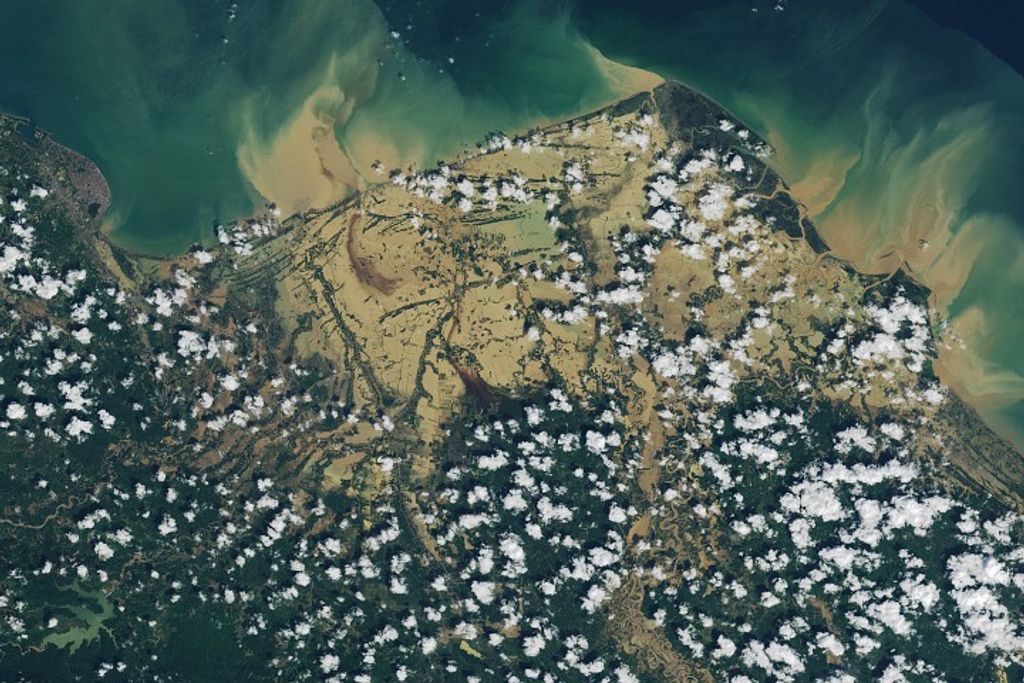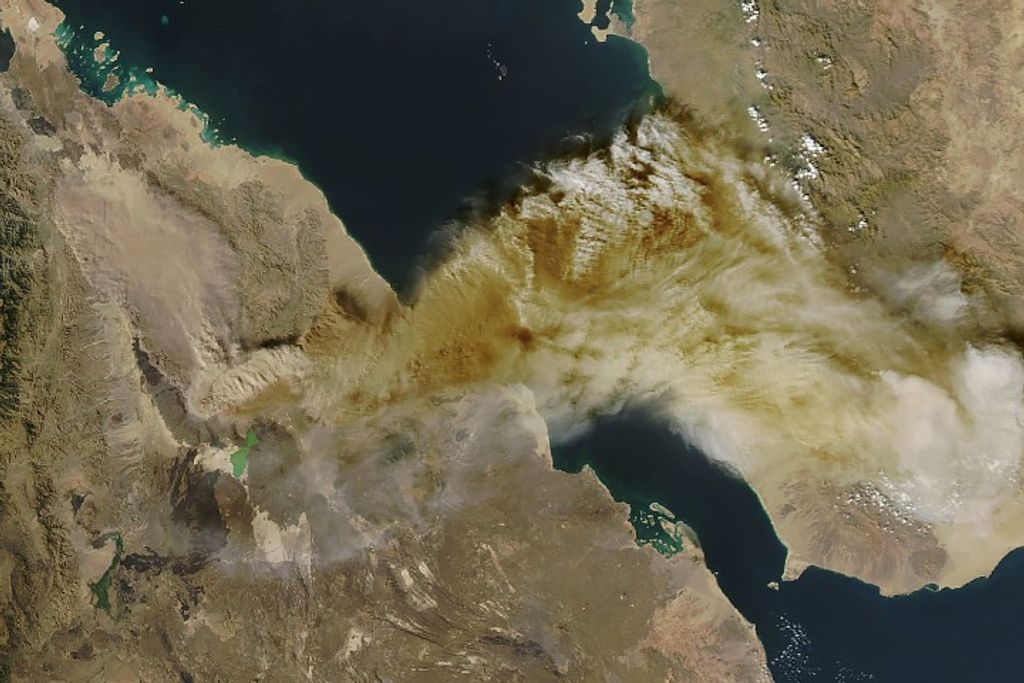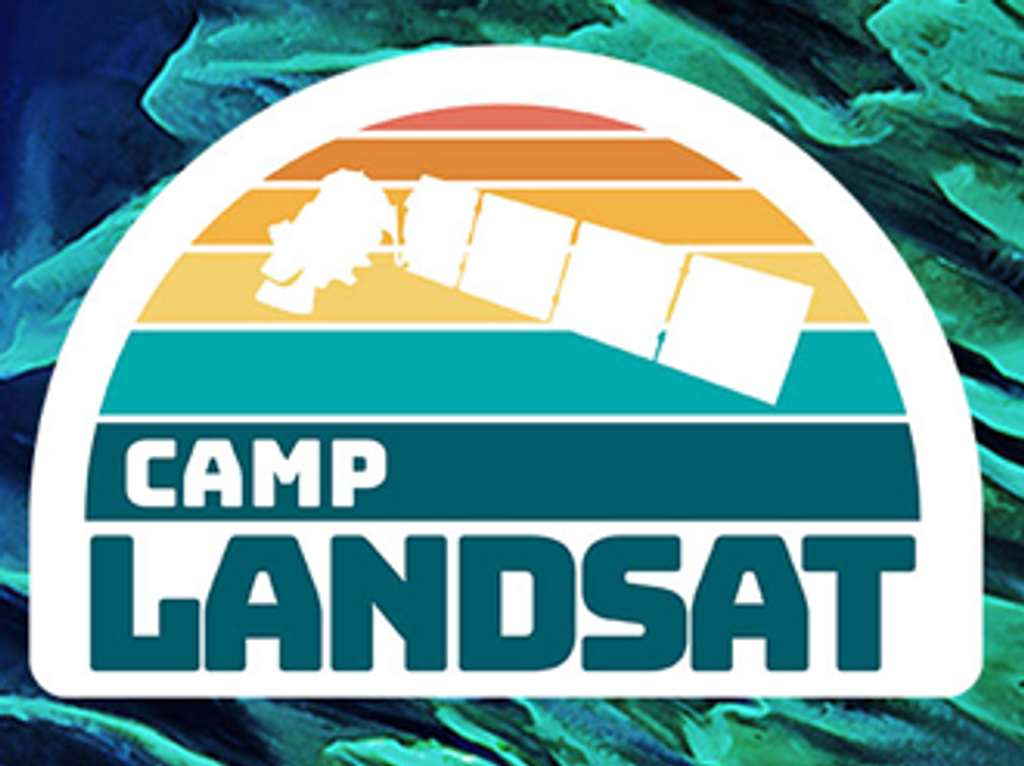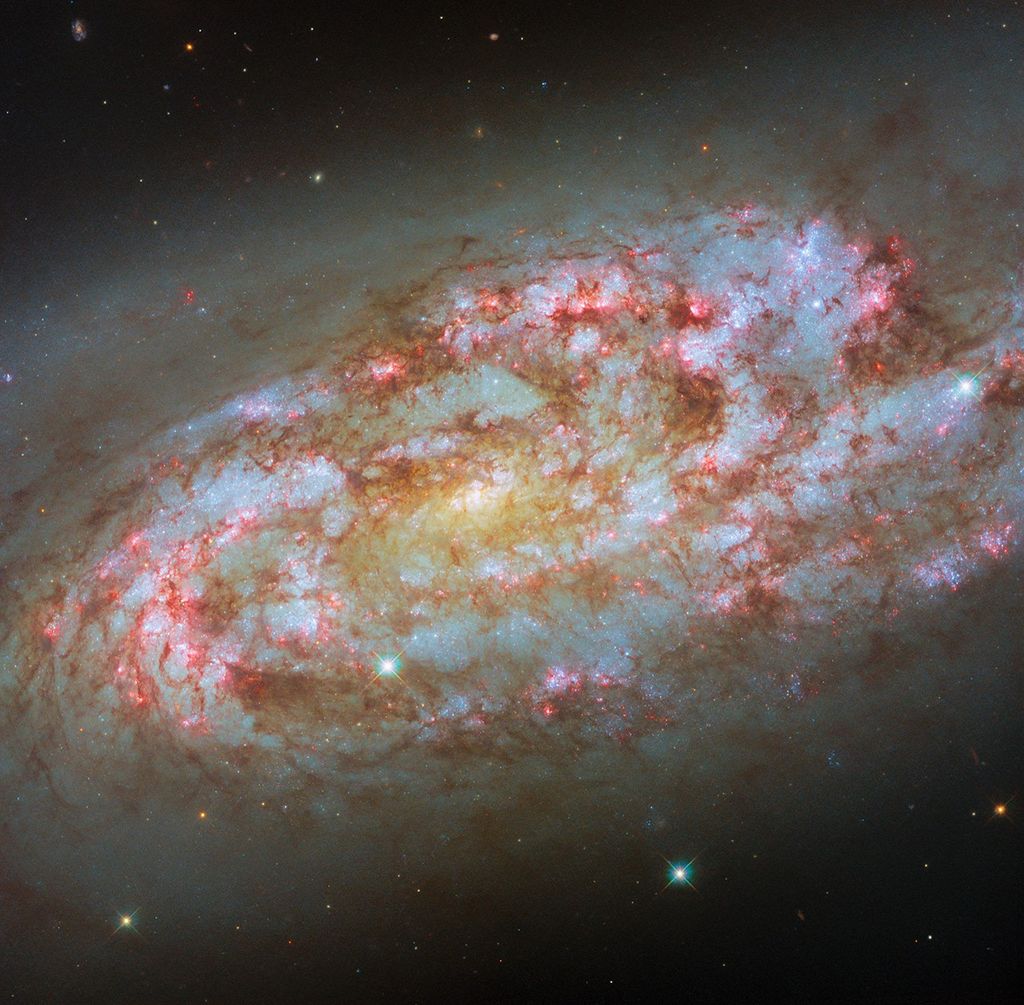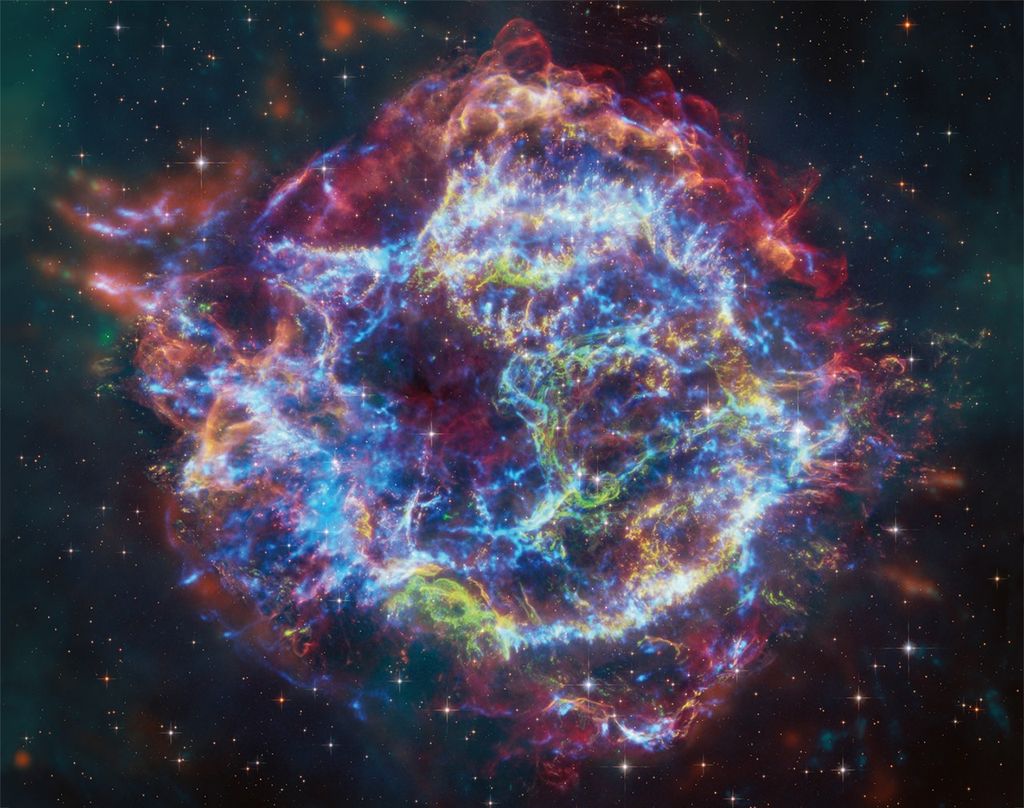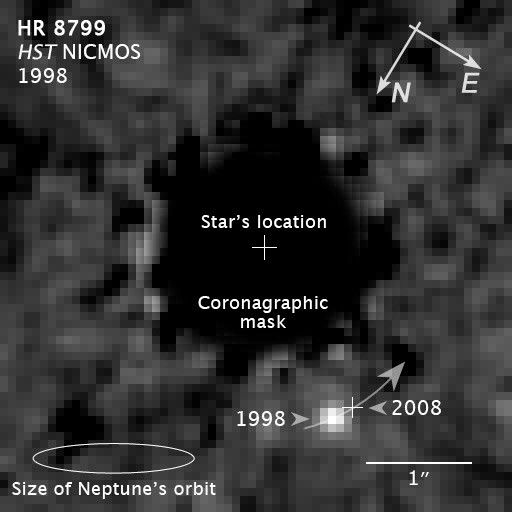1 min read
Exoplanet HR 8799b Recovered in NICMOS Data Archive (Annotated)
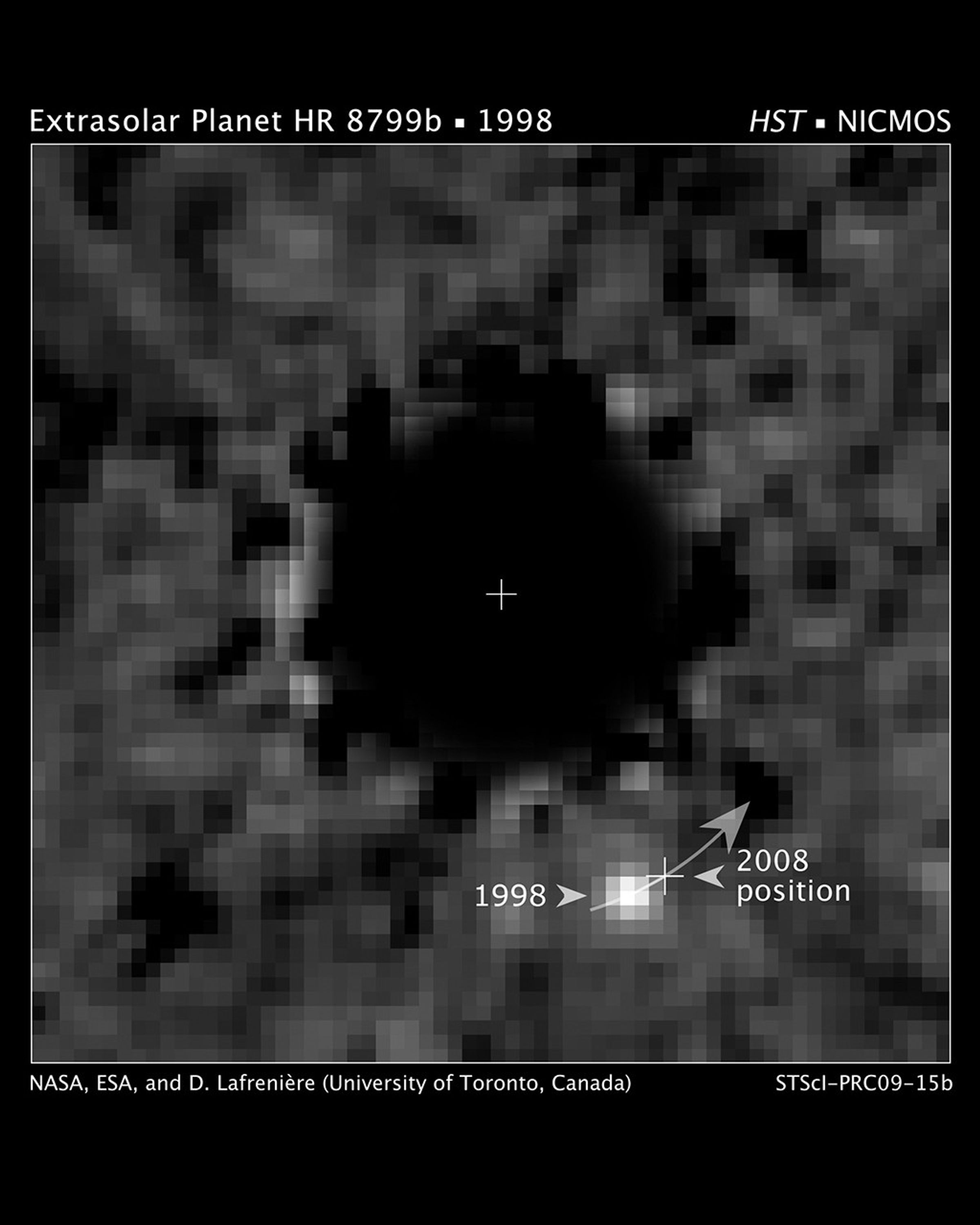
This is a Hubble Space Telescope NICMOS (Near Infrared Camera and Multi-Object Spectrometer) coronagraphic image of a planet orbiting the star HR 8799, located 130 light-years away.
The coronagraph has been used to block the light from the bright star (black circle) allowing the search for the dim glow of the planet HR 8799b. A special image-processing algorithm was used to suppress the starlight bleeding around the coronagraph to the point where the planet was detectable.
The planet was first discovered in 2007 at the Gemini North observatory. It was identified in the NICMOS archival data in a follow-up search to see if Hubble had serendipitously imaged the planet. The planet changed position between the two epochs as it moved along its centuries-long orbit about the star.
The planet is estimated to be at least seven times the mass of Jupiter and about the same diameter. It is located 6.3 billion miles from its parent star.
About the Object
- R.A. PositionR.A. PositionRight ascension – analogous to longitude – is one component of an object's position.23h 7m 28.71s
- Dec. PositionDec. PositionDeclination – analogous to latitude – is one component of an object's position.21° 8' 3.3"
- ConstellationConstellationOne of 88 recognized regions of the celestial sphere in which the object appears.Pegasus
- DistanceDistanceThe physical distance from Earth to the astronomical object. Distances within our solar system are usually measured in Astronomical Units (AU). Distances between stars are usually measured in light-years. Interstellar distances can also be measured in parsecs.130 light-years or 39 parsecs away
About the Data
- Data DescriptionData DescriptionProposal: A description of the observations, their scientific justification, and the links to the data available in the science archive.
Science Team: The astronomers who planned the observations and analyzed the data. "PI" refers to the Principal Investigator.The Hubble data is from proposal 7226: E. Becklin (University of California, Los Angeles), D. Kirkpatrick and P. Lowrance (California Institute of Technology), B. Zuckerman (University of California, Los Angeles), G. Schneider and D. McCarthy (University of Arizona), T. Henry (Georgia State University Research Foundation), R. Terrile (Jet Propulsion Laboratory), D. Koerner (University of Pennsylvania), and B. Smith (University of Hawaii). The science team comprises: D. Lafrenière (University of Toronto, Canada), C. Marios (Herzberg Institute of Astrophysics, BC), R. Doyon (University of Montreal), and T. Barman (Lowell Observatory). - InstrumentInstrumentThe science instrument used to produce the data.HST>NICMOS
- Exposure DatesExposure DatesThe date(s) that the telescope made its observations and the total exposure time.October 30, 1998
- FiltersFiltersThe camera filters that were used in the science observations.F160W (H band)
- Object NameObject NameA name or catalog number that astronomers use to identify an astronomical object.HR 8799b
- Object DescriptionObject DescriptionThe type of astronomical object.Extrasolar Planet Orbiting Star HR 8799
- Release DateApril 1, 2009
- Science ReleaseHubble Finds Hidden Exoplanet in Archival Data
- Credit

Related Images & Videos

Artist's Concept of Exoplanet HR 8799b
This is an artistic illustration of the giant planet HR 8799b. The planet was first discovered in 2007 at the Gemini North observatory. It was identified in the NICMOS archival data in a follow-up search of NICMOS archival data to see if Hubble had also serendipitously imaged...

Exoplanet HR 8799b Recovered in NICMOS Data Archive
This is a Hubble Space Telescope NICMOS (Near Infrared Camera and Multi-Object Spectrometer) coronagraphic image of a planet orbiting the star HR 8799, located 130 light-years away. The coronagraph has been used to block the light from the bright star (black circle) allowing the...

Artist's Concept of Exoplanet HR 8799b (Annotated)
This is an artistic illustration of the giant planet HR 8799b. The planet was first discovered in 2007 at the Gemini North observatory. It was identified in the NICMOS archival data in a follow-up search of NICMOS archival data to see if Hubble had also serendipitously imaged...
Share
Details
Claire Andreoli
NASA’s Goddard Space Flight Center
Greenbelt, Maryland
claire.andreoli@nasa.gov








